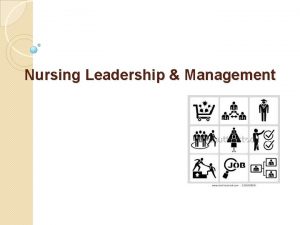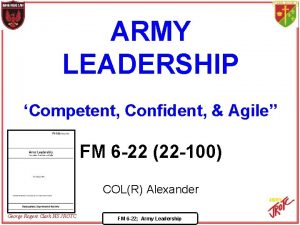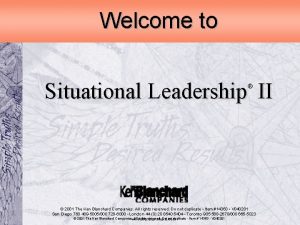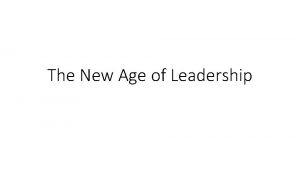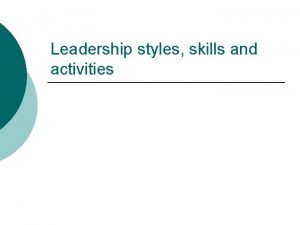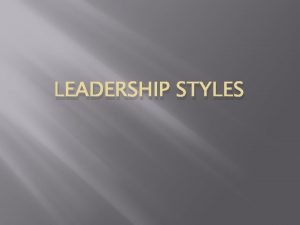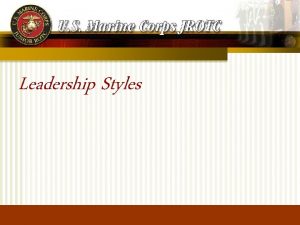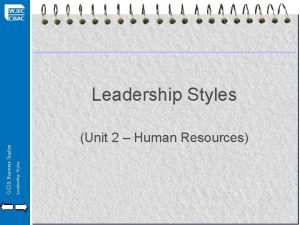Leadership Styles The three common styles of leadership









- Slides: 9

Leadership Styles • The three common styles of leadership identified by psychologist Kurt Lewin in 1939: – Democratic ( also referred to as Participative) – Authoritarian (also referred to as Autocratic) – Laissez-faire (also referred to as Delegative)

Leadership Styles • Democratic – allows free flow of ideas – shapes groups with regard to consensus opinion – keeps group focused – makes decisions and determinations based upon group’s consensus – motivates group members – is friendly and sociable – allows group members to feel they can do tasks their own way

Leadership Styles • Authoritarian – is firm, demanding, and direct – dictates group activity – does not accept the ideas of others – demands that group members perform tasks quickly and efficiently – causes unhappy relationships to develop – uses power to influence others to carry out ideas

Leadership Styles • Laissez-faire – is less structured than democratic – does not direct group activity – allows group members to do whatever they want – produces groups that are not very productive – stays on the same level as the group

Leadership Styles • Since Lewin, other leadership styles have been identified. – Bureaucratic • Work “by the book” • Follow rules rigorously • Good when working with safety issues or large sums of money

Leadership Styles – Charismatic • Inspire enthusiasm among team members • Energetic • May believe more in him or herself than the team members – People-oriented • Focused on organizing, supporting, and developing the team members • Encourage teamwork and creative collaboration

Leadership Styles – Servant • Similar to democratic leadership • Leads by meeting the needs of the team – Task-oriented • Highly task oriented, get the job done • Don’t always consider the well-being of the team

Leadership Styles – Transactional • Team members agree to obey the leader totally when they accept the job • The leader has a right to reward or punish the team members • More of a management style than leadership – Transformational • True leaders • Inspire team members with a shared vision of the future

Leadership Styles • When choosing a leadership style keep the following in mind: – The skill levels and experience of team members – The work that will be done (routine, new, creative, etc. ) – The work environment – Your preferred or natural leadership style
